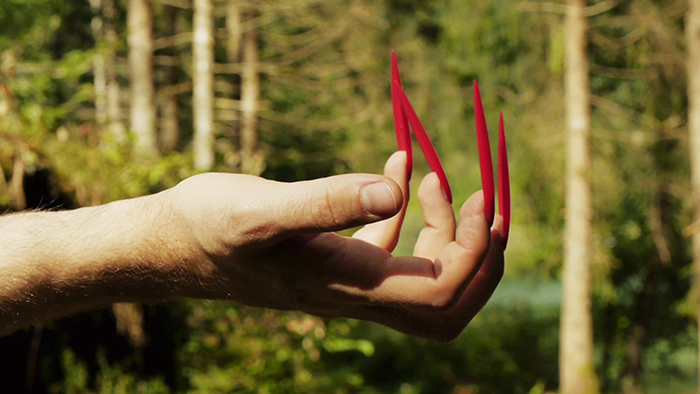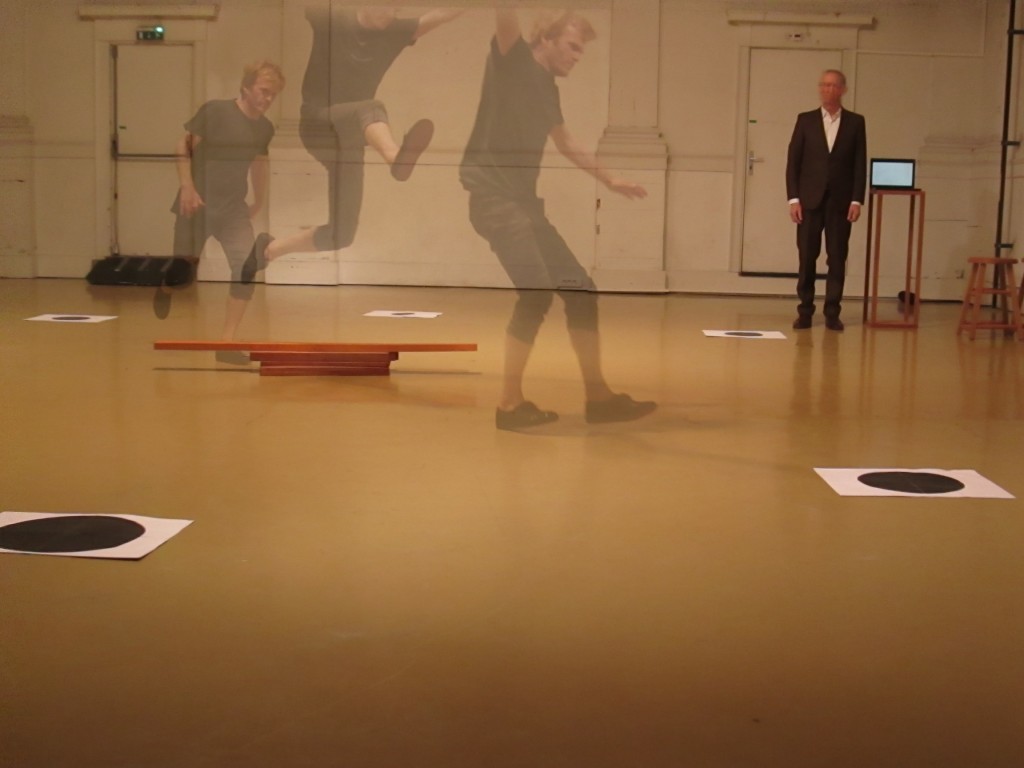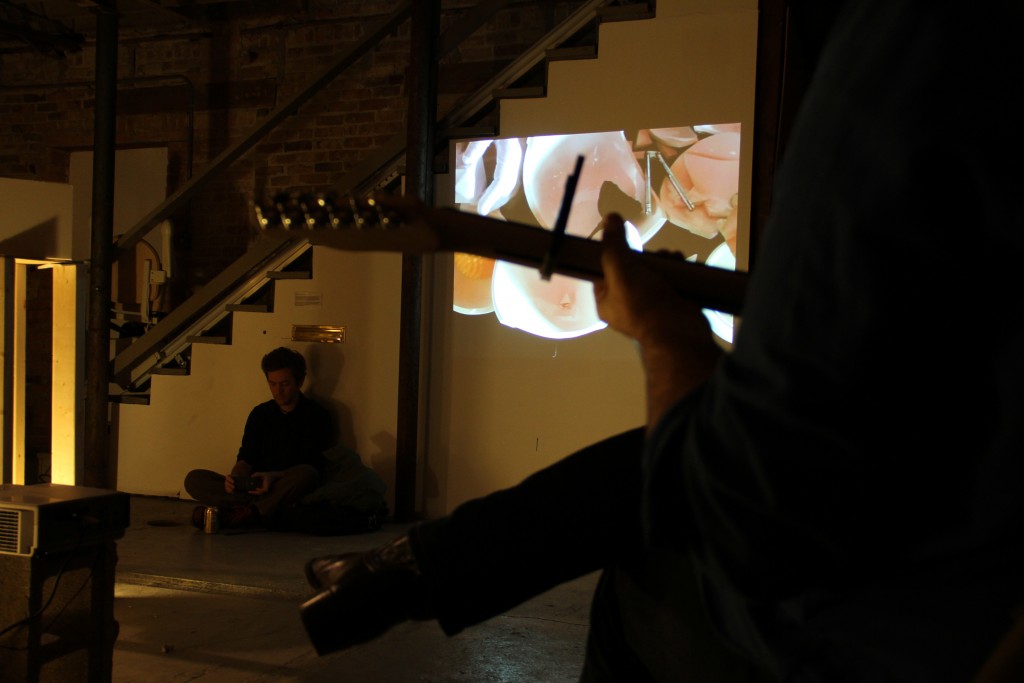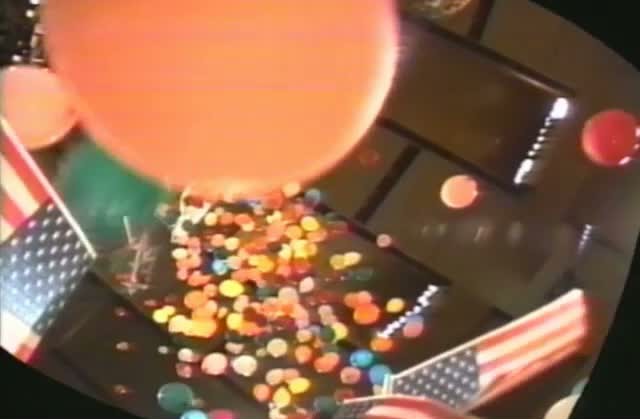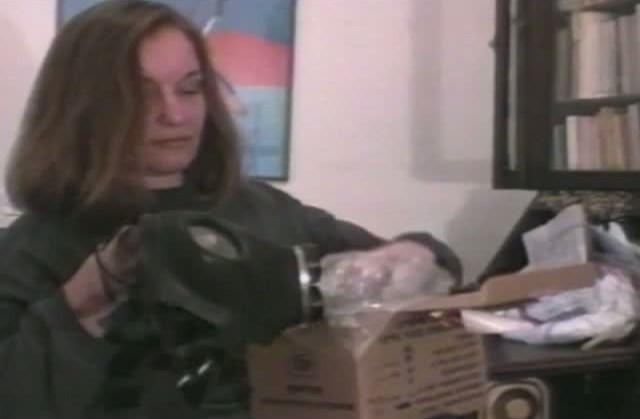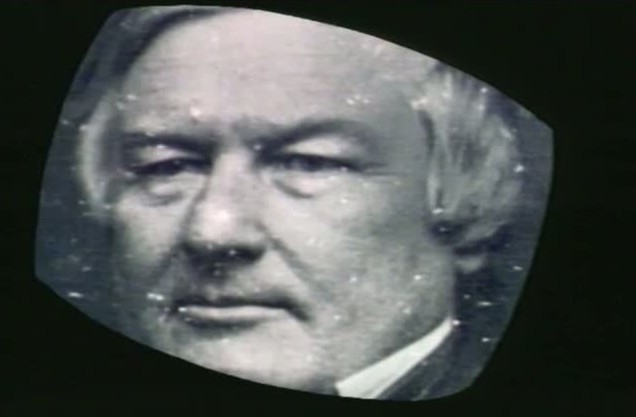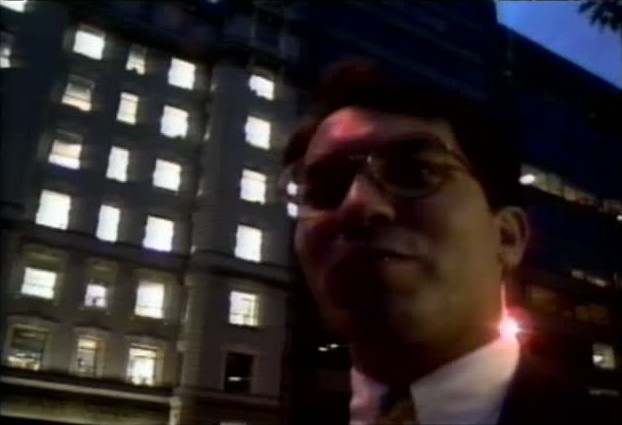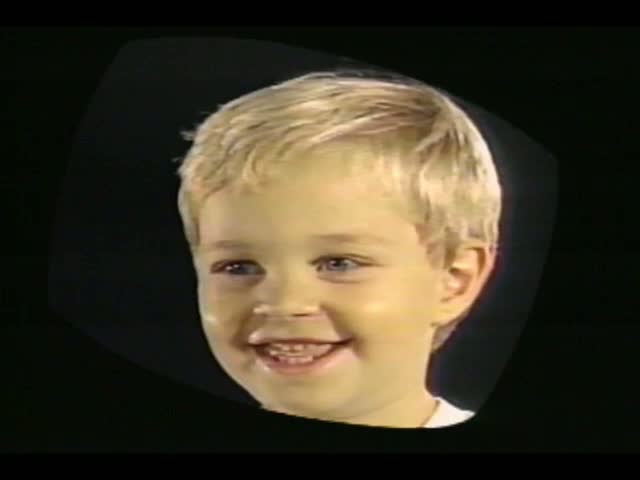Streaming June 26th: Episode 216 – 304

Episode 216: Invasions and Revolutions (12am, 8am, 4pm CDT)
Episode 216 of the award-winning TV series The 90’s. This episode is called “Invasions and Revolutions” and features the following segments:
01:59 Excerpt from “Invasion in Panama: Legacy of a Massacre” by Barbara Trent and The Empowerment Project. An excerpt from a documentary examining allegations of widespread civilian killings committed by U.S. troops during the 1989 invasion of Panama.
07:08 “Century City” by Nancy Buchanan and Sue Kurvink. A protest for assorted liberal causes outside a fundraiser for Republicans in Los Angeles. The protesters try to coax Republicans in formal wear on balconies to join them with the chant, “Jump, Jump, Jump…”
08:16 “Black Consciousness Movement” by Andrew Jones. Various leaders of anti-apartheid movements in South Africa talk about their struggle. In Johannesburg, protesters sing and dance while boarding a bus.
15:13 “Krishna vs. Christians” by Nancy Cain. A short video about a Hare Krishna parade in Venice Beach, California and the Christians who are on hand to protest it.
23:10 “Israeli Soldiers” by David Cort. Israeli soldiers discuss their moral hangups with the fighting in Gaza: “I can’t see how a soldier can aim at a child…We don’t have anything to do here. I think many Israelis, not the majority, would happily give it back to Egypt.” Another soldier: “I don’t want to kill anybody. Maybe if someone wants to kill me I should kill him and feel good with it… Maybe it’s the natural thing to do…Maybe I’m too sensitive.”
26:10 “Peat Bog Soldier” by Diane Weyermann. A portrait of Eddie Balchowsky, an American soldier who lost his right hand during the Spanish Civil War. He tells of his injury and his battle with drug addiction.
30:42 “It’s Our Pleasure to Serve You” by Laurie Anderson. Satirical monologue on military spending. “But like all military research that goes over budget they keep reminding you, ‘Yeah sure we went a few billion over, but think of the spin-off technologies – tin foil, spray-on cheese. You’d never discover this stuff without spending some extra cash.’”
31:57 “Namibian Independence, 1990” by Nancy Buchanan and Michael Zinzun. An interview with Rev. Peter Lamoela. He talks about the experience of raising the new flag after Namibia won its independence from South Africa in 1990. “I was rather glad America didn’t send George Bush. That would have been a low point… He is giving a whole lot of bandits sophisticated ammunition to fight us… how thankful he didn’t come… The world has made my people a whole lot of beggars.” A band leads celebration of independence.
36:13 “Habitat for Humanity”by Nancy Cain. Jimmy and Rosalynn Carter help put up a house for a black family in San Diego. Picketers protest because an environmental impact survey wasn’t conducted at the construction site.
40:12 “Manic Denial” by Hal Rucker. This animated short chronicles the events that lead to one woman’s involvement in an antinuclear weapon protest. She remembers watching films about the Holocaust in school and how she didn’t blame Hitler, but the masses who allowed it to happen. They are ostrich people, she said. Similarly, her uncle ignored a missile silo right next to his farm. She gives a talk on denial at the hospital where she works…”How many times must we see a mushroom cloud before it doesn’t mean anything anymore?” She decides to stage a protest and sets up 100 life-sized cardboard ostriches around her small town. She and her accomplices wake up everyone they can with civil defense sirens to alert them of the impending nuclear war…just to make people think.
48:50 “Prison Dialogue Continues” by Wendy Clarke and Shauna Garr. Prisoners from Chino Prison in California perform a rap that emphasizes the importance of staying in school. A few other inmates just talk to the camera: “If you intend on hurting someone else with your dreams, you’re going to end up in prison.” California high school students respond with their own video tapes – “I just want to say that it’s great that all of you want us to stay in school, but I just want to say that school really sucks.”
52:28 “What Drives Disneyland” by Nancy Buchanan. Pixellated video from Disneyland. The message: that when people come to Disneyland they are immediately homogenized.
54:05 “The Human Race” by Aashid. Aashid performs a song highlighting the world’s problems. “What’s wrong with the men of the world/maiming and killing and raping little girls…The human race is the happening thing.”
55:34 End credits.
58:39 Promo for The 90’s.
Main Credits:
executive producer, Tom Weinberg; producer, Joel Cohen; chief bureaucrat, John Schwartz; editor, John Grod; outreach producer, DeeDee Halleck; “Hare Krishnas” and “Habitat for Humanity” by Nancy Cain; 90’s correspondents, Skip Blumberg, Esti Galili Marpet, Starr Sutherland and Appalshop; “Panama Invasion” by Barbara Trent, The Empowerment Project; primary camera, Michael Dobo; primary ediotr, Gary Meyer; “Century City” by Nancy Buchanan and Sue Kurvink; send Prison Dialogue tapes to: California Institution for Men, Box 128, Chino, CA 91710, Attn: Arts / Tom Skelly, Wendy Clarke; “Albert: computer animation” by Mark Stpehen Pierce; 90’s West, Nancy Cain, Chief, Judith Binder and Jody Proctor; production administrator, Linda Schulman; business affairs, Eric Kramer; network builder, Jonathan Cohen; production assitants, Pat Creadon, Brian Strause and Melissa Sterne
Additional Credits:
paintbox, Rich DuCasse; major collaborator, Scott Jacobs; titles & effects created at Independent Programming Associates; opening sequence produced by John Anderson; opening film sequence by Tom Finerty; original music by The Cleaning Ladys; for KBDI, director of programming and production, Diane Markrow; post-production facilities, The Center for New Television, Chicago; funded in part by The John D. and Catherine T. MacArthur Foundation and Instructional Telecommunications Foundation, Inc.; copyright 1990 The Center for New Television

Episode 217: Life in the Grey Areas (1am, 9am, 5pm CDT)
Episode 217 of the award-winning TV series The 90’s. This episode is called “Life in the Grey Areas” and features the following segments:
00:55 “Advice Ladies” by Skip Blumberg. Women who give advice on New York City streets warn us: “People are doing the wrong drugs. Instead of all the good drugs that they did in the ’60s they’re doing drugs that mess you up, like crack and heavier versions of crack. If people just changed their drugs, everything would be fine.”
1:49 “Agribusiness” by Gary Glaser. A glimpse into a greenhouse full of cultivated marijuana plants with accompaniment from Neil Young: “Homegrown is a good thing/Homegrown is the way it should be.”
02:20 “Wavy Gravy” by Pat Creadon. At Weedstock in Black River Falls, Wisconsin, Wavy Gravy, the perennial countercultural figure, speaks about legalizing marijuana. He says: “Let’s get real, herb should be legalized, I’m tired of my friends getting put away for smoking a little herb. Part of my spiritual life is smoking herb.” “The ’90s are the ’60s standing on their head.”
03:51 “Indian Alley” by Jim Mulryan. Homeless, alcoholic Native Americans talk about their problems on the streets of Los Angeles. Conrad Hunter: “We drink so much, the thing is we’re losing each other…We sold our buffalo hide…just for the alcohol…It makes me feel real good. When I open the bottle. Drink…I don’t care about nobody but myself…but now when I’m kinda sober, I realize who’s hurting who. I’m hurting myself.”
07:56 “Gray Area III: Rhythm and Form” by Gregory Anthon. To the beat of drums, black and white graphics flash across the screen and develop into photographs superimposed upon each other – a collage of humanity.
09:08 “Rev. Calvin O. Butts” by Esti Galili Marpet. Rev. Butts speaks: “The politicians really have no concern about the people of the United States of America…The only concern is with the dollar…If they can exploit America in this process they will…There really is no love for the children of this country…I think it’s a cruel hoax and I think it’s deception… It really approaches evil…The infrastructure of America is weakening, so we become vulnerable to our enemies. And the captains of industry and commerce will just go wherever they can to make their quick cash. “
10:55 “Bob Mustang on Capitalism” by Russ Miller. With the American flag sailing at his back, Bob Mustang performs a satirical monologue on the free-market system: “I’m Bob Mustang and I’m a capitalist. I’m talking about hands-off deregulation…It’s the gold. It’s the girls. It ‘s the wealth of nations…Adam Smith, a Scottish guy. We’re listening to a Scottish guy!?…Government. Get that government off my back. Get ’em off. Bob is trying to do some business…Essentially the rich get richer, the poor get poorer…Oh, don’t worry. The middle class. We’re the biggest company in America. Spill a little oil, it’s alright, we’ll bend over and pay for you. We’ll pay…Hey. the S&L’s break…Don’t worry, we’ll pay…We got plenty of money. We’ll take it. Bend over, we’ll take it – give it to me…Marijuana is a big cash crop…We don’t want to legalize it. It would mess up what? Capitalism…If you legalize that price will drive you right down. That’s the framework in which we operate here.”
15:52 “Street Drugs” (AKA Father Bill Davis / Christic Institute) by Eddie Becker. Father Bill Davis spent the last ten years in a poor, drug-infested neighborhood a stone’s throw away from the nation’s capital in Washington D.C. He’s outraged at the government’s “war on drugs.” Davis comments that “It’s just a PR campaign… how can we purport to have a major war on drugs when foreign policy supports drug cartels?” He is convinced that drugs are only part of the problem – unemployment, housing conditions and hunger are the real issues. “People who have very few choices in their lives are told to say no,” he says.
19:00 Richard Dennis, chairman, Advisory Board Drug Policy Foundation, speaks: “The current drug policy is doing kids a disservice…it’s saying that all drugs are the same and it’s setting up kids to have endless doubts about what authority figures say and if they can be trusted. Minority neighborhoods are being used as staging zones for drug warriors to attack dealers in order to protect people in the suburbs from themselves…the War on Drugs is regressive.”
20:07 “Dope Dealer” by Allah’s Army, The Empowerment Project/Portiflex Media Center. An anti-drug rap performed by little kids and a few adults.
23:27 “Tom McKean” by Joel Cohen. Ex-cocaine addict McKean does open line radio and talks to school kids in Chicago’s inner city about how to avoid peer pressure and drug use. He says that “government is not the answer, prison is not the answer, rehabilitation is the answer…The reason we do drugs is because we live fast-paced lives and we have needs and we don’t know what to do…Kids need to be loved off drugs.”
27:25 “Weird Amsterdam” by Charles Gatewood. A comedic monologue about the culture of Amsterdam.
31:39 More from “Wavy Gravy.” Gravy tells us of his dislike for cocaine.
32:18 “Crackfish” by Byte By Byte. Computer-generated fish are blown up. PSA warns: “Crack gets you out of school. Permanently.”
32:06 “Spraypaint” by Nick Gorski. Artist Scott Williams cuts out the dark parts of photos and spray paints over the stencil. Stephen Barr, video producer and agent, “His art is really what popular art should be. Why does that Geisha Girl have a kimono over the Elvis Presley image? That’s making the biggest pop cultural statement you can make, because Elvis Presley is the ultimate American icon and Japan – we have this stereotype of Japan – with this culture that’s thousands of years old versus this American pop culture. They just collide into this surreal accident.”
38:11 “Bombing Los Angeles” by Gary Glaser. Kids talk about their graffiti art and the police harassment they deal with. During filming, an angry owner tries to get them off his property and a debate ensues, culminat ing in the classic rebuttal, “If you think it’s artwork, do it on your own house and see what your father does.”
43:40 More from “Gray Area III.”
42:24 “Robert Sundance” by Jim Mulryan. Robert Sundance on the DTs, “I didn’t know if you cut yourself off from booze, you’d get withdrawls, which is the DTs…It was a horrible experience. After you go through them 50 or 100 times you kinda know what to expect.” He goes on to say that the secret to success for the Native American Indian is sobriety. Only then will the Native American be able to rightfully control his affairs. “We should be getting something out of all our natural resources which are being stolen from us. The federal government doesn’t want that to happen. So alcoholism for American Indians is a conspiracy between the United States of America and the giant multinational corporations who want to get into the treaty lands and exploit the resources. The genocide of today is alcoholism.”
47:00 “Ain’t Gonna Pee in the Cup” by Bianca Miller. A comical, anti-drug testing music video.
49:15 “Captain Ed” by Chuck Cirino. Captain Ed takes us through a tour of his head shop in Los Angeles. As the camera pans a selection of bongs and other paraphernalia, Ed says, “These are the things that they want me to stop carrying. We’ve been an honorable business, we’re under the gun. My business shouldn’t be harassed.” In the black light room Ed talks about voting, “If Byrne votes in 1992, they’ll give us what we want the next time around…If you don’t use it, you’re gonna lose it…If we vote, they’ll be on our list.”
53:49 “Portrait of a Modern Day Minstrel” by Douglas Lunsford. Michael Stanley Rizza plays the Dobro guitar and sings on a couch in an oil field.
56:33 Joe Cummings reads Viewer Mail under the end credits. “Yes, good news, PBS has scheduled The 90’s in prime time starting in April.”
58:33 Promo for The 90’s.
Main Credits:
executive producer, Tom Weinberg; producer, Joel Cohen; chief bureaucrat, John Schwartz; editor, John Grod; outreach producer, DeeDee Halleck; “Rev. Calvin O. Butts” by Esti Galili Marpet; “Street Drugs” by Eddie Becker; 90’s correspondents, Skip Blumberg, Nancy Cain, Andrew Jones, Starr Sutherland and Appalshop; “Wavy Gravy” by Pat Creadon; “Dope Dealer, with Allah’s Army” by Empowerment Project / Portifex Media Center; “Crackfish” by Byte By Byte; “Robert Sundance” by Jim Mulryan; “Modern Day Minstrel” performed by Michael Stanley Rizza; 90’s West, Nancy Cain, Chief, Judith Binder and Jody Proctor; production administrator, Linda Schulman; business affairs, Eric Kramer; network builder, Jonathan Cohen; production assitants, Pat Creadon, Brian Strause and Melissa Sterne; Voice of THE 90’s, Abby Polonsky; special thanks, Joe Angio and Channick Broadcasting
Additional Credits:
paintbox, Rich DuCasse; major collaborator, Scott Jacobs; titles & effects created at Independent Programming Associates; opening sequence produced by John Anderson; opening film sequence by Tom Finerty; original music by The Cleaning Ladys; for KBDI, director of programming and production, Diane Markrow; post-production facilities, The Center for New Television, Chicago; funded in part by The John D. and Catherine T. MacArthur Foundation and Instructional Telecommunications Foundation, Inc.; copyright 1990 The Center for New Television

Episode 218: Global Warring (2am, 10am, 6pm CDT)
Episode 218 of the award-winning TV series The 90’s. This episode is called “Global Warring” and features the following segments:
01:29 Keven Heuer by Dee Dee Halleck. Halleck interviews 19-year-old U.S. Marine Keven Heuer while in a plane taking him to the Persian Gulf. “I’m going over there. I may die. You have to prepare yourself for that.”
02:47 “A Matter of Conscience” by John Luvender. Bill Short is a Vietnam veteran who collects oral histories and photographs of people who resisted the war, like he eventually did. “Part of me carries some guilt for not having fulfilled my sense of duty…I felt my youth had been stolen from me…I think the greatest strength about this country is we have that freedom of conscience. I think one of the things our project does is it fills a void in the historical perspective. It’s important we have a complete understanding of that war so that we know if we get into war again the reasons are clear. The greatest disservice we can do to future generations is be quiet about what the war is really about.”
07:13 “Into the Sand Trap” by Paper Tiger TV. A George Bush impersonator “golfs” his way through previous war courses and slices into the current “gulf” crises.
07:56 “Invasion of Panama: Laboratory of Death” by The Empowerment Project. The evidence suggests that the U.S. military used laser weapons during the invasion of Panama. Jose Morin of the Center for Constitutional Rights speaks of “the severe destruction of facial features” of some of the casualties. One survivor says, “They’ve been using us like guinea pigs in a laboratory.” Robert Knish, Executive Producer of “Undercurrents” talks about the unusual wounds found on some bodies: “The physicians described the head as soft and squishy.” Ramsey Clark, former U .S. Attorney General says there was “experimentation of weaponry we haven’t conceded was used.” U.S. Department of Defense footage is also included.
12:54 More from Keven Heuer. Heuer casts gloom on the Persian Gulf crisis: “I don’t think they’ll use nuclear weapons except as a last resort. If Saudi Arabia wants to use chemical warfare, as we know they are well capable of doing, we’d have no other choice but to use nuclear weapons.”
13:29 “Viva Futbolito” by Robbie Leppzer/Turning Tide Productions. A profile of a group called “Footbaggers for Peace” who use footbag as means to bridge relations with the people of Central America. “The young people in [The U.S.] are playing footbag, enjoying footbag, so it symbolizes what is hip, what’s cool and fun, what’s in style; yet it also ties into this historical love of foot games that the Central Americans have. The footbag is quite incidental to what we’re doing. It happens to be a good median to break the ice. What we’re doing here is planting seeds for an alternative relationship between Gringos and Central Americans. It gives me hope that common citizens can do something.”
20:55 “The Heart Broken in Half” by Taggart Siegel and Dwight Conquergood. In Chicago, members of the Latin Kings, a street gang, mourn the loss of one of their own, Negro. Negro was beaten severely by a rival gang and died the next day. An intricate part of the mourning process includes graffiti memorials throughout the neighborhood. Members translate the meaning of various symbols. Home video of the funeral and of Negro when he was alive is included. “He wanted to fight them one on one like a brave men does it, like a Latin King does it.” In front of a graffiti memorial a gang member says, “We throw beer in water for Negro. We pray for Negro to look out for us. It’s like a church for us.” “We write our love on the wall.”
28:10 “Malvin Hobley” by Jimmy Sternfield. In Denver, Malvin Hobley, an African-American in his early twenties, warns against getting involved in gangs. “We have so much negative looking at the black male. Anything that happens, either a black male did it or it’s gang related. You know it’s not true. I know it’s not true. What the media needs to do is get on the hype tip and find out what’s getting these young boys and these young girls into this gang business. If they wanted to stop it, it would have been stopped by now. It’s just a way of getting us to go against each other. It makes the job easier for them if you know what I’m talking about. There’s a better way we can go.”
30:14 “Tortilla” by Turning Tide Productions. Guatemalan women make tortillas.
31:22 More from Keven Heuer. “My job is to go out and report the size, activities, weapons, vehicles, things that nature to the battalion. We will be behind enemy lines before the actual combat would happen.”
31:53 Leslie Marie Watson of Amnesty International at Louisiana State University comments on “the strong and broad-based” antiwar sentiment throughout the nation and the need to channel that sentiment into a persuasive “no blood for oil” message to President Bush and Congress.
32:48 “The Party’s Over” by Steve Schecter. Juxtaposed with music from Moscow street musicians, scenes from protests during the 28th Congress of the Communist Party reflect the new freedom of expression allowed in the USSR. An ex-KBG leader and current populist hero due to his criticism of that agency addresses a crowd. “The U.S. influenced me not by it’s materialist wealth, but it influenced me as I saw the black population in the ’60s rise for their rights and achieve justice for at least a large part of their people.”
39:06 “Jolly Boys” by Soviet Central Television/Audrey Knishev. An excerpt from one of the most popular comedy specials on Soviet TV explores individualism in the USSR with the use of some interesting video techniques. “Everyone lives in his own shell – dust proof, water proof, shock proof.” Life is compared to a game of billiards, with a huge ball rolling and careening throughout Moscow. “I am General Secretary and only member of my own party. I am not in love with myself, just infatuated, It’s not a sin to be in love with yourself as long as you love those around you. If I want to escape from you I simply close my eyes and you don’t exist.”
43:58 “Swords Into Plowshares” by Terry Moyemont. In Vizari, Crete, a blacksmith makes a plow, then watches video of himself at work, prompting shots of ouzo for everyone.
46:05 More from “Kevin Heuer.” “The Philippines cannot survive without our military bases there. The communists don’t want us there. When our lease is up they may try to stir something up. If they do it could be a real hairy situation over there.”
46:48 “Coup D’Etat” by Nick DeoCampo. There are 16 U.S. bases in the Philippines and their lease is up in 1991. There is evidence that nuclear weapons are being stored there, making a country that has no enemies a prime target in a nuclear war.
48:58 “Don’t Go Too Crazy” by Stewart Ellis. Animation. Rollo, a hideous scab of cartoon character holds a toon in his hand and asks if he is ugly. “Monstrous, perhaps, but not ugly,” he replies. Rollo stuffs the character into his mouth and eats him. A “sports quiz” asks if it would have been better to have agreed with Rollo and not get eaten. “You make the call.”
50:36 “North Korea 1990: A Quick Trip” by Andrew Jones. An impressionistic, and one-sided look at Korea highlighted by U.S. atrocities during the Korean War.
56:03 “Todd Alcott” by Skip Blumberg. The 90’s regular Todd Alcott rants: “The end of the world. I’m awake, I’m alive. That’s why the end of the world hasn’t come yet. I’m breathing. If I inhale and exhale I can keep the world from ending… I don’t mind doing it for people. I consider it a service.”
57:28 “Moscow Violin” by Skip Blumberg. A woman holds the bow while a violinist plays as end credits roll.
59:21 Promo for The 90s.
Main Credits:
executive producer, Tom Weinberg; producer, Joel Cohen; chief bureaucrat, John Schwartz; editor, John Grod; outreach producer, DeeDee Halleck; “North Korea 1990: A Quick Trip” by Andrew Jones; “Todd Alcott” and “Moscow Violin” by Skip Blumberg; 90’s correspondents, Eddie Becker, Nancy Cain, Esti Galili Marpet, Starr Sutherland, and Appalshop; “Kevin Heuer” by DeeDee Halleck; “Invasion in Panama” by Barbara Trent; camera, Michael Dobo; editors, Anselmo Mantovani and Gary Meyer; “Tortilla” by Turning Tide Productions; “Malvin Hobley” by Jimmy Sternfield; “Don’t Go Too Crazy” by Stuart Ellis; “Into the Sand Trap” and “Leslie Marie Watson” by Paper Tiger TV and Gulf Crisis TV Project; “Albert: Computer Animation” by Mark Stephen Pierce; 90’s West, Nancy Cain, Chief, Judith Binder and Jody Proctor; production administrator, Linda Schulman; business affairs, Eric Kramer; network builder, Jonathan Cohen; production assitants, Pat Creadon, Brian Strause and Melissa Sterne; Voice of THE 90’s, Abby Polonsky; special thanks, Shu Lea Cheang and Channick Broadcasting
Additional Credits:
paintbox, Rich DuCasse; major collaborator, Scott Jacobs; titles & effects created at Independent Programming Associates; opening sequence produced by John Anderson; opening film sequence by Tom Finerty; original music by The Cleaning Ladys; for KBDI, director of programming and production, Diane Markrow; post-production facilities, The Center for New Television, Chicago; funded in part by The John D. and Catherine T. MacArthur Foundation and Instructional Telecommunications Foundation, Inc.; copyright 1990 The Center for New Television

Episode 219: Love, Marriage, And What Follows (3am, 11am, 7pm CDT)
Episode 219 of the award-winning TV series The 90’s. This episode is called “Love, Marriage, And What Follows” and features the following segments:
1:10 Cold open with Mary LeRaven. “Of course, when you find that the marriages do last and work out, you find that there’s something wonderful in a man’s pants.”
1:20 90’s opening.
2 :03 “I Do” by Catherine DeSantis. Various couples discuss societal portrayals of marriage and how they relate to their own marriages.
07:51 “Houston” by Nancy Cain. Houston is a young fashion designer. She talks about a dress she made from a tablecloth she found at a garage sale and the chain link accessories which she got at the hardware store. About her training: “We go to college. We spend $50,000 and what we learn is to think like little kids again.”
10:09 “Dateless” by Gary Glaser. A female performer does a monologue endlessly rehashing the reasons why she has been single for the better part of a decade.
15:45 Excerpt from “The Kissing Booth” by Merrill Aldighieri and Joe Tripician. Excerpt from a documentary about kissing, featuring interviews with poet Emily XYZ and South African musician Spider.
17:10 “John Lykes” by Jim Mulryan. An interview with a former womanizer about his obsession with sex, conquest, and women. “I remember one day in the ’70s I made love to four different ladies in one day…I’m not boasting; I just think it was a pretty special day…I was quite a predatory guy. When I saw a woman I wanted it was like seeing a piece of pizza I wanted to eat…I see in myself a change, a very very healthy change…It’s the person inside — that’s what is really beautiful…I think getting to know someone [is what’s important]…You know, a great connoisseur from France or Italy would take a glass of wine and savor it on the tongue before swallowing it. It’s not just gulping down the wine in great lusty drafts that satisfies you, it’s the flavor, the bouquet, the nuance.”
19:56 “Safe Sex Slut” by Carol Leigh a.k.a. Scarlot Harlot. A satirical music video picking on the nation’s obsession with safe sex: “I fasten seat belts to stay alive/I never drive past 55/I watch TV/I don’t hang glide/I never drink insecticide/Safe Sex!”
21:17 “Mary Le Raven” by Jim Mulryan. An older woman who makes art out of bones talks about her sex life and her art: “My husband died so soon, I think I snapped the life out of him… ‘Cause we had sex in the morning and sex in the evening, sex at lunchtime…and we did it because this was love and we liked what the other had.” Later she sings a song, “Bones is my business…I do any thing with bones…I got ’em with clothes on. I got ’em with clothes off…” She holds up a doll with a prominent erection and explains how she happened upon the bone that serves as the penis. Mulryan asks, “What do women think when men have penises like that?” She answers, “Well, the smaller ones they think less of…The large ones they worship…The men folk in my family carry the right kind…Of course, when you find that the marriages do last and work out, you find that there’s something wonderful in a man’s pants.”
27:16 “AIDS PSA” by Gran Fury. An AIDS PSA with the message “Kissing doesn’t kill. Greed and indifference do. Corporate greed, government inaction and public indifference makes AIDS a political crisis.”
28:01 “Teenage Pregnancy” by Fred Bridges. Counselors and black teenagers from Chicago talk about pregnancy. An anonymous woman: “Babies was not one of my choices of what I was planning to do with my future. I wanted to go to medicine school and be a nurse, help people…With a baby it’s going to be a lot harder and not so easy now…I was pregnant when I was twelve. I had the baby in the beginning of my 8th grade year. The father is 18 now. He recently made 18.” Ora Zachary, a social work assistant says, “98% of them do not finish high school…They have the second child before age 18…Their parents say, ‘I helped you with the first one — You have to come home and take care of you own kids’…It’s at the crisis stage at this point.”
33:34 “Cabbage Patch Delivery Room” by Paper Tiger TV. Babies are delivered at the Cabbage Patch delivery room. The policy: “No returns, No exchanges.”
34:54 More from “John Lykes” by Jim Mulryan. “The Hindu religion embraces sex as being godly. As a matter of fact, on the wedding night in a Hindu marriage, the man conceives of the woman as being an incarnation of a goddess, the woman envisions the man as an incarnation of a god…Their physical contact is very refined…the point being about tantric sex — this person, this partner, is there to assist you in your evolution…The ultimate in tantric sex is during the act of coitus when the man is inside the woman, he should be inside of her for at least a half hour, without ejaculating, remaining firm inside to point where the energy begins to move…and they leave their bodies in a state of bliss.”
37:09 “My Dad, Bob” by Vicki Polon. Polon interviews her newly-single 81-year-old father who is getting into the dating game. He has already placed a personal ad and has formed a steady relationship with a 30-ish young woman. “The best advice I can give any man is stay single and raise your children the same way.”
39:50 “Nimrod Workman” by Appalshop. A retired coal miner talks about his long marriage.
44:47 “Leaving the 20th Century” by Max Almy. An ironic portrayal of dating in the ’90s. “He left because there was nothing good on TV…She left because she was overeducated and lost her grant.”
45:42 “Finding Our Way” by Nick Kauffman Productions. Twelve heterosexual, bisexual, and gay men between the ages of 27 and 71 retreat for the weekend to talk about their sexuality in a therapy-like setting. The men are surprisingly candid and emotional about sex: “I feel the closest to someone when I’m making love to them…I like getting to know someone’s psyche, emotions.” “I like the smell, taste and messiness of sex.” “I’d like to have a woman without being judged by her, even though I have a preference for men.” “I’d like to have sex and not worry about dying.”
47:57 Excerpt from “Making it in Hollywood” by Tom Weinberg. Cissy Colpitts, an aspiring actress in Hollywood, tap dances outside.
48:26 “Love Connection” by Jay April. A backstage view of the show “The Love Connection.” People discuss the difficulty of dating is in the ’90s. We watch some of the show and interview contestants backstage plus Eric Lieber, executive producer.
56:44 “Wedding Dance” by Bob and Stacie Chukerman. A couple dances at their wedding to “Memories,” the theme from “Cats.”
57:04 End Credits.
58:55 Promo for The 90s.
Main Credits:
executive producer, Tom Weinberg; producer, Joel Cohen; chief bureaucrat, John Schwartz; editor, John Grod; outreach producer, DeeDee Halleck; “Houston” by Nancy Cain; “Love Connection” by Jay April; “Nimrod Workman” by Appalshop; 90’s correspondents, Eddie Becker, Skip Blumerg, Esti Galili Marept and Starr Sutherland; “John Lykes” and “Mary Le Raven” by Jim Mulryan; “AIDS PSA” by Gran Fury; “Leaving the 20th Century” by Max Almy; “Making It in Hollywood” with Cissy Colpitts; “Closing Credits” by Bob & Stacie Chukerman; 90’s West, Nancy Cain, Chief, Judith Binder and Jody Proctor; production administrator, Linda Schulman; business affairs, Eric Kramer; network builder, Jonathan Cohen; production assitants, Pat Creadon, Brian Strause and Melissa Sterne; ordinary thanks, Joan Adelamn, Channick Broadcasting and John Tondelli
Additional Credits:
paintbox, Rich DuCasse; major collaborator, Scott Jacobs; titles & effects created at Independent Programming Associates; opening sequence produced by John Anderson; opening film sequence by Tom Finerty; original music by The Cleaning Ladys; for KBDI, director of programming and production, Diane Markrow; post-production facilities, The Center for New Television, Chicago; funded in part by The John D. and Catherine T. MacArthur Foundation and Instructional Telecommunications Foundation, Inc.; copyright 1990 The Center for New Television

Episode 301: Money, Money, Money (4am, 12pm, 8pm CDT)
Episode 301 of the award-winning TV series The 90’s. This episode is called “Money, Money, Money” and features the following segments:
3:05 “Bureau of Printing and Engraving” by Eddie Becker. Becker visits the Bureau of Printing and Engraving and talks to the bored workers. When asked about the best part of her job, an assembly line worker replies, “There is no best part. When I get bored, I stand up.” He goes to the Federal Reserve, where an interview he had scheduled has been canceled. “Everyone I have been interviewing about the Federal Reserve says the Fed prefers to operate in the shadows, in the dark, away from the scrutiny of public view. Within these hallowed halls bizarre rituals with money took place.”
9:09 “Joel Kovner” by Nancy Cain and Judy Procter. At the First Professional Bank in Santa Monica, California, bank president Joel Kovner gives a brief tour of the vault. “Before the bank opened we played monopoly with real money.”
12:09 Prof. Paul Nadler commentary by Skip Blumberg. Nadler explains how bank loans have changed with the existence of fixed interest rates. “Savings and loans started as a family financial center. You brought in your deposits and they’d make mortgage loans. It used to be what you’d call a 3-6-3 business. They’d take your money at 3, they’d lend it back to you at 6, they’d be on the golf course by 3. It didn’t take much talent to run a savings and loan. Basically where the money went – they were paying it out, paying it out and not earning it. They refused to admit they were dead, making it the biggest scandal in American financial history. “
15:19 “Sarah Ogan Gunning” by Appalshop. Gunning, an Appalachian folk singer, sings “I Hate the Capitalist System.”
16:59 “Ed Sadlowski” by Tony Judge. Ed Sadlowski, of the Steelworkers union in South Chicago talks about the economic disparities in the United States. “The real question at hand is the distribution of wealth. Look at the situation of health care in this country. It’s criminal. Yet who’s opposing it the most? The insurance companies. A few years ago if I said we needed a national health insurance program the Lee Iaccocas call me communist, socialist, everything else in the world. He’s not championing the cause. He’s on my side for a change. To share that wealth is to share power. When you start talking that way, pal, they put you up against the wall.”
18:24 “Andrew Jones in Iraq.” Jones talks to us from a peace camp in Iraq where an international group of protesters have formed a human shield between armies to attempt to prevent the beginning of the Iraq War. “I’m a black American and Bush had astutely put the deadline [for Iraq to pull out of Kuwait] on Martin Luther King’s birthday, January 15. Bush was assaulting an idea – an idea of peace…it could have been January 18, January 20, it could have been any day. I was pissed off at him for desecrating Martin Luther King’s birthday.”
25:32 More from Prof. Paul Nadler. “One of the problems with America is we live in a world where everything has to be solved – instant journalism, instant success. A guy makes a speech and within one minute a reporter has to analyze it…What have we done to this country?”
26:02 “John Stiles” by Judith Iam. After holding up traffic with his horse and buggy, John Stiles comments on the people stuck in their cars. “It’s the lonely crowd. How lonely it must be. All by yourself, locked up in a machine, traveling through time, experiencing none of the space, with half of reality eliminated from your experience.”
27:22 “Susan Cohn” by Skip Blumberg. On Broadway in New York, Susan Cohn, a career counselor, talks about American cultural domination and the people’s differing definitions of what it means to be rich.
28:38 “Aos Donos Do Destino” by Joao Ribeiro. The first music video from Mozambique features the vocals of Elvira Viegas and a large cast of dancing children.
32:40 Andrea Carmen speech by Robble Leppzer. “At the heart of the struggle is a conflict of world view. We could talk about the indigenous world view and the corporate world view. The indigenous world view looks at this world as something that is alive. The corporate world view sees the world as something dead, something to be used and to be used as profit. The corporate executives of the world are holding us all hostage. If somebody came into your home and pointed a gun at your children, you would act. Don’t you feel that desperation that we feel?”
34:55 “Eco Rage” by Robbie Leppzer. A look at a demonstration on Wall Street the day following Earth Day, 1990. “We got the power to save the earth,” chant the protesters. They clog up traffic with trash cans and bike racks and encourage Wall Street workers to take the day off. One protester is mercilessly beaten by the New York police after feigning to stop traffic in the street.
37:12 Todd Alcott by Skip Blumberg. 90’s regular Todd Alcott rants. “It used to be if you needed furniture you made furniture. Everybody had the skills they needed to survive. No one makes things anymore, they have jobs. They work at an office…not to produce a thing, but to make money to buy things. We’re disassociated from our own possessions. Can you make a shirt? I can’t. We have no connection to things and how they’re made. Consequently we have no connection to each other. Money has become the fifth element. It can cancel out the other four because it can take their place at any moment. You don’t need to tame fire anymore. You just need to pay your gas bill. The Indians used to think the earth was sacred. It was holy. Anyone will tell you today that it ‘s just capital waiting to be exploited. The whole planet is a business, Earth Inc. Assets 48 kazillion dollars. What is that?!! Is that a reason for opening your eyes in the morning?…”
40:11 “Bowery Forger” by Dee Dee Halleck. Blacksmith Tovey Halleck at work in the Bowery.
40:46 “Test the West” by Simone Shoemaker. After the fall of the Berlin Wall, East Germans experience a free market economy for the first time. We interview a woman who is trying a fast food hamburger for the first time. “My husband would throw me out [if I served him this for dinner].”
43:27 Harry Magdoff commentary by Esti Galili Marpet. Magdoff, an economist, talks about the problem of homelessness in the United States. “There’s no reason that with the resources this country has that there can’t be homes for the homeless. When it came to the Second World War we had to build very quickly. It was achieved relatively simply and in record time, but it was for war, it was for destruction. In times of peace, the possibilities are all here.”
44:50 “Built into the System” by John Schwartz and Johnnie Jones. A glimpse at the homeless situation in Denver. There are plenty of empty homes, but also a huge number of homeless people. Kathy, a single parent with two children, talks about losing her job and rapidly becoming homeless.
46:39 “Ruth Handler” by Judith Binder and Jody Procter. Handler, co-founder of Barbie dolls, now produces prosthetic breasts for masectomy patients with a company called “Nearly Me.” She explains her history of how difficult it was for her after she lost her breasts while giving us a tour of the factory. Handler shows us her prosthetic breasts, literally unbuttoning her dress and taking them out of her bra.
52:38 More from Ed Sadlowski. “There has never been a man who has worked for another man who was paid his due. People bitch about a ballplayer getting a million dollars a year playing second base for the White Sox. When I take my grandkid to the ballpark I don’t take him to see Jerry Reinsdorf and Eddie Einhorn. I go there to see the ballplayer play. Why shouldn’t the ballplayer get the dough rather than two guys sitting in a skybox somewhere?”
54:00 “The Money Man Monument” by Doug Michels. A satirical piece featuring a mock meeting of fundraisers for the Money Man Monument, a skeleton in a suit placed in a tube of money on Washington DC’s Mall – “a permanent tribute to green power and the American Way.”
54:58 More from Prof. Paul Nadler. Nadler talks about the change in tax laws and how 90% of Americans pay more social security tax than they do income tax.
56:13 Wally Nelson by Robbie Leppzer. Wally Nelson has not paid his income tax for 42 years. He refused to fight in WWII and was jailed. “If I refused to let my body be drafted for killing, I should not let my money get drafted to pay for killing. We do not have to feel we are powerless.”
57:31 Montage of images from the show to the tune of Irving Berlin’s “Can You Use Any Money Today?” plays under credits.
Main Credits:
executive producer, Tom Weinberg; producer, Joel Cohen; 90s correspondents, Appalshop, Eddie Becker, Skip Blumberg, Fred Bridges, Nancy Cain, Andrew Jones, Esti Galili Marpet and Jimmy Sternfield; “Bureau of Engraving & Printing” by Eddie Becker; “Joel Kovner” by Nancy Cain and Jody Procter; “Paul Nadler,” “Susan Cohn” and “Todd Alcott” by Skip Blumberg; “Sarah Ogan Gunning” by Appalshop; “Ed Sadlowski” by Tony Judge; “John Stiles” by Judith Iam; “Andrea Carmen” and “Wally Nelson” by Robbie Leppzer; “Bowery Forger” and “Tovey Halleck” by Dee Dee Halleck; “Harry Magdoff” by Esti Marpet; “Ruth Handler” by Judith Binder and Judy Procter; “Money Man” created by Doug Michaels; outreach producer, DeeDee Halleck; chief bureaucrat, John Schwartz; production administrator, Robyn Hensel; assistant excutive producer, Patrick Creadon; assistant producers, Andrea Be, Anita Padilla, Melissa Sterne and Brian Strause; network builder, Jonathan Cohen; 90’s west, Nancy Cain, Chief, Judith Binder and Jody Proctor; Voice of THE 90’s, Ricki Katz; video production, Patrick Creadon and Joe Angio; special thanks, Tony Judge, Don Reed, Chuck Olin, Channick Broadcasting, Ed Reardon, Despres, Schwartz & Geoghegan; major collaborator, Scott Jacobs; title music, Gary Klaff; additional music, Alan Schulman and John Anderson; original graphics, Independent Programming Associates, Richard DuCasse; “Albert,” computer animation by Mark Stephen Pierce; off-line editing, Center For New Television, John Grod and Mirko Popadic; production administrator, Linda Schulman; business affairs, Eric Kramer; network builder, Jonathan Cohen; production assitants, Pat Creadon, Brian Strause and Melissa Sterne; ordinary thanks, Joan Adelamn, Channick Broadcasting and John Tondelli; on-line editing, Michael J. DeLazzer
Additional Credits:
post-production audio, James Guthrie; electronic graphics, Barbara Shintani; executives in charge of production, for KBDI Diane Markrow, for WTTW C. Patterson Denny; a presentation of KBDI / Denver, WTTW / Chicago; MCMXCI Fund for Innovative TV, All Rights Reserved

Episode 302: It’s Only TV (5am, 1pm, 9pm CDT)
Episode 302 of the award-winning TV series The 90’s. This episode is called “It’s Only TV” and features the following segments:
0:36 “New York TV Demonstration” by Skip Blumberg and Esti Marpet. At the ABC building in New York, Peter Jennings is questioned by a protester about the major networks’ failure to cover the antiwar movement. “You’d never know there was an antiwar movement from watching the news,” says the protester.
1:12 The 90’s opening.
2:08 More “New York TV Demonstration.” The story begins with Skip covering the media covering a protest against the media but also includes comments from protesters. Betty Aberlin of “Mr. Rogers’ Neighborhood” fame begins, “When people over the years ask what Mr. Rogers is about I joke and say he’s kind of like the flip side of Big Brother. When I see our president playing Mr. Rogers in his talk of a kinder, gentler I-don’t-know-what or his talk of the darnest search and destroy mission, I must say the resemblance is a little too close for comfort.” Bill Schaap of “Lies of Our Times” talks about the simplistic nature of the news and how “news is distorted and shaped to fit the establishment.” Poet Allen Ginsberg, on his way to a birthday party, comments about the media over the noise of the street demonstration.
13:54 Todd Alcott by Skip Blumberg. The 90’s regular Todd Alcott rants: “Good evening, this is the news. I’m an anchor. You can tell by the outfit. If I were a commentator, I’d be thirty years older. If I were a weatherman, I’d be fat. If I were a sportscaster, I’d have a really bad haircut. If I were a war correspondent, I’d wear a safari costume. Through the miracle of television we can bring you the news when it happens, as it happens. We will bring you the news quickly and accurately just as soon as the government says we can. We assault you with so many contradictory messages you don’t know what’s going on at all. You don’t know if anything is real. Look at my hand, there are pieces missing from my hand. I’m dissolving in a blizzard of lies.”
15:51 “Daisy” by Nancy Cain. Elderly woman named Daisy performs blues music at Venice Beach.
17:25 “At Home with Howard Rosenberg” by Nancy Cain. Los Angeles Times television columnist Howard Rosenberg talks about television. “‘Frontline’ is one of the few places on public television that you can find anything with any balls.” He watches four TV sets simultaneously: “And despite that I’m relatively sane.” “Shopping channels. They’re a real kick. I find myself watching them a lot. Some of the people on there are really good salespeople. Cathy, she’s incredible, she’s amazing.”
23:58 “Switching Channels” by Nancy Cain. Nancy Cain switches through the channels, coming up with gas mask after gas mask scene. When the shopping channel appears Nancy says, “Cathy where’s your gas mask? Come on girl!”
25:15 “Peter Poppoff Revealed” by Aron Ranen, from 1986. A look at how televangelist Peter Poppoff tricked viewers with miracles through the help of a radio transmitter in his ear controlled by his wife backstage. We hear the transmissions of Poppoff’s wife cuing him from backstage while we see him acting on her information. “Take a few steps to make the Devil made,” he says. He then throws an arthritis-stricken lady’s cane like a javelin: “You’re not going to be needing that anymore.” In the meantime, his wife tells him things like addresses and names to give him that omniscient aura. Various congregants are confronted with the tape of his radio transmissions. One says, “It really makes me believe less in him,” while others are more unwilling to believe that Poppoff is a fake. Poppoff himself is confronted in an interview about his exploitative nature, to which he replies, “Are cigarette ads exploiting their audiences? You could say yes.”
33:27 “National Religious Broadcasters Convention” by Eddie Becker. Dave Bradshaw of “World View Perspectives” comments on television: “When I do watch television, I enjoy watching Public Television because it is in many ways educational. However, you have to understand that there’s a world view that shapes the production of that program. Christians should lead the environmental movement more.” Eddie: “I asked you about television.” Bradshaw: “I got off on a little tangent there. By design, television has encouraged us to stop thinking. It’s proven that our brain waves actually slow down after watching hours and hours of television. We’re giving ourself over to the media. I personally think that NBC, ABC, all of the networks are linked in to the New World Order. We have to understand, as Christians, that the media has a world view. There’s no such thing as totally unbiased reporting. Television has not done a job in helping us to develop any kind of our own world view.”
36:06 More from “Channel Switching.”
36:43 Bob Mustang by Russ Miller. Bob Mustang is at a windmill field in the desert and performs this monologue. “This show is a satellite feed via satellite. TV was created by man for man to use, like a screwdriver or a hammer or a wrench. It’s something to manipulate something with. TV is a tool. You can take a hammer and nail something to the wall or you can beat somebody’s skull in with it. Same idea. It’s not the tool, it’s who uses it. The man on the TV is going to force feed me the junk I don’t want. And behold the man who came from the TV screen. Start praying to a new god.” He walks away and asks, “Are you still watching?”
39:38 More music from Daisy on Venice Beach.
41:08 “Making Waves” by Karen Ranucci. In La Paz, Bolivia there is no garbage pickup, no sewage system, no running water and a plethora of street children. A Canadian-based group called ENDA has developed a video workshop to help the street kids get a different view of their reality and to discover that they have other talents than shining shoes.
46:24 “Peter Stranger” by Nancy Cain. Peter Stranger, an advertising executive involved in the Joe Isuzu commercials, talks about that campaign’s success. The actual character of Joe Isuzu (played by David Leisure) is interspersed throughout. “I’m not sure if this was genius or dumb luck. We tapped into the nation’s consciousness. There was a mood going on at the time. Wall Street was booming and 26 year olds were making $400,000 a year. Joe Isuzu was a liar. He was the most honest car salesman out there. He mocked the chest beating that was coming from the standard auto manufacturer – ‘and I’m no Joe Isuzu’. We just loved it when he was doing that.”
48:17 More “At Home with Howard Rosenberg.” Rosenberg expresses his concern that the news media does not consider their own impact on the American people. “You see the war on television, but you did not see the war on television. I’ve seen people on television die before my eyes and the scariest part is not so much seeing it, the scariest part is seeing it and not feeling anything.”
51:45 More “New York TV Demonstration.” Peter Jennings is surrounded by protesters who question him about the networks’ failure to report the war accurately and the lack of antiwar news. When asked what he’s doing there he says he’s trying to cover the story. “Accurately?” asks someone. “I’ll let you be the judge of that,” Jennings replies. “You’re not doing a very good job so far” is the response.
55:25 “Big Screen Delivery” by Nancy Cain. A big screen TV is delivered to a home while the music of the Muddy Bottom Blues Boys plays under credits.
Main Credits:
executive producer, Tom Weinberg; producer, Joel Cohen; program producer, Nancy Cain; 90s correspondents, Appalshop, Eddie Becker, Skip Blumberg, Fred Bridges, Nancy Cain, Andrew Jones, Esti Galili Marpet, Jimmy Sternfield and Starr Sutherland; “New York TV Demonstration” by Skip Blumberg and Esti Galili Marpet; “Todd Alcott” by Skip Blumberg; “Daisy,” “Howard Rosenberg,” and “Peter Stranger” by Nancy Cain; “National Religious Broadcasters convention” by Eddie Becker; “Big Screen Delivery” by Nancy Cain, music by The Muddy Bottom Blues Boys; “Joe Isuzu” by Della Famina McNamee, Inc., starring David Leisure; production administrator, Robyn Hensel; business affairs, Eric Kramer; chief bureaucrat, John Schwartz; network builder, Jonathan Cohen; production assistant, Melissa Sterne; 90’s West, Nancy Cain, Chief, Judith Binder and Jody Procter; Voice of THE 90’s, Ricki Katz; “Albert,” Computer Animation by Mark Stephen Pierce; original graphics, Independent Programming Associates, Rich DuCasse; title music, Gary Klaff; major collaborator, Scott Jacobs; off-line editing, Center for New Television, John Grod
Additional Credits:
executives in charge of production, for KBDI Diane Markrow, for WTTW C. Patterson Denny; on-line editor, Michael J. DeLazzer; electronic graphics, Barbara Shintani; post-production audio, James Guthrie; a presentation of KBDI / Denver, WTTW / Chicago; MCMXCI Fund for Innovative TV, All Rights Reserved

Episode 303: Bartalk (6am, 2pm, 10pm CDT)
Episode 303 of the award-winning TV series The 90’s. This episode is called “Bartalk ” and features the following segments:
1:17 “Time Lapse Bar Footage” by Mark Zero. Time lapse scenes from a New York bar with music by Big Bill Broonzy.
2:02 Tony Fitzpatrick and Mark Levinson by Tony Judge. Two reformed drinkers talk about their experiences with alcohol at a Chicago bar. Tony Fitzpatrick leads the conversation: “The last drink I ever had was 8:30 October 5, 1983, eight thirty in the morning. All I can remember is that I looked up and the ceiling was black – the ceiling was painted black so it wouldn’t show the smoke. And I thought, ‘This is like a tomb.’ I felt like I was dead. That day I checked myself in. I was 24 years old when I quit. What I miss about bars, I guess, is the kind of idealized thing you see on “Cheers.” They never show someone puking their toenails out at 5 in the morning – ‘Yeah, it’s Miller Time.’ I can count on one hand the friends that I had before I quit who are still friends. Part of my history is in these saloons and I can’t get away from that. To pretend that it never happened and to live in fear of a drink, that’s not sound either. Sometimes these rooms bring out the best in human beings and sometimes the worst. [Tony Judge: “Don’t mind if I have a beer?”] Get this guy a beer and I’ll have a sarsaparilla.”
7:37 “Random Positions” by Jo Bonney and Ruth Peyser. Animated video featuring bar pick-up lines. Includes a performance by Eric Bogosian.
8:38 “Peaches” by Eddie Becker and Danese Seals. Peaches, a bartender from Washington D.C., talks about the dangers of looking for a long-term relationship at a bar. “Any woman who feels they’re going to meet their mate, their partner, in a bar, they’re wrong. They’ll never do it because men are there for one thing and one thing only. If they went there by themself, they’re gonna pick up someone and take them home. They start with the prettiest girl in the bar and before the lights are up, they’ll take the ugliest woman. It’ll never work. Go to church, meet someone nice.”
9:39 “The Dating Game” by Fred Bridges. A look at “The Dating Game,” a bar in Chicago frequented by the upwardly mobile black community. “Congressmen (Gus Savage), aldermen, everyone comes here,” says the hostess. The ladies’ room attendant showcases the line of available cosmetics, combs, munchies and undergarments. “We don’t discriminate, we do take care of the larger figure,” she says.
14:07 “Mike Royko and Studs Terkel” by Tony Judge. Studs Terkel interviews Mike Royko about bars as they sit in a Chicago neighborhood tavern. Royko: “A tavern is much more than a place where you get a drink. You can buy a pint at the liquor store and have a drink on the street corner. The neighborhood tavern served a lot of functions: community center, social center, political debating hall, the country club for the working guy, group therapy. [Studs: What you’re saying is the social aspect is missing today?] Well the saddest thing I’ve ever seen, well not the saddest thing I’ve ever seen, we’re talking in terms of drinking patterns, is guys who rush in the big commuter station (Union Station) and run over to a cafeteria and get a double martini in a styrofoam cup and they go rushing off to get their train. If he lived in the city, he’d walk home, go to the place on the corner, sit down and have a relaxed drink.”
18:21 “The Fox” by Jay April. In Brentwood, California, The Fox entertains a drunk bar crowd with sing-alongs and tricks like drinking a beer standing on his head.
19:50 “Whiskey Bend” by Chuck Cirino and David Nichols. A glimpse into a neighborhood biker bar.
21:58 “Cut Time” by Sarah Bleakley. A look at a the bar scene on New York’s Lower East Side. The lead singer from Two Minutes Hate says, “Rock ‘n Roll is about a kid with a guitar playing a song. That’s all it ever was.” The Gamma Rays, an all female band, sing “It’s Not a Safe Life.”
24:11 “At the Bar” by Laura Greenfield and Gary Glaser. A stylized depiction of bar scenes with voiceovers of people talking about alcohol. Q: “What’d ya drink?” A: “Vodka tonic and beer.” Q: “Both at the same time?” A: “Depends on my mood really. If I want to get really drunk, I do both.”
24:58 “Conrad Hunter” by Jim Mulryan and Arlene Bowman. Native American Conrad Hunter talks his alcoholism. “It [alcohol] makes me feel real good. Inside my mind when I open the bottle, it’s getting the whole thing out of my head. I don’t care about nobody other than myself, but now when I’m sober, I realize who’s hurting who. I’m hurting my self. Probably tomorrow I’ll be lying in the alley, dead…After talking to you people, I think I’m gonna go upstairs and get myself into a program, because this is not really like me.” Three months later Conrad is on the wagon and enjoying his return to making artwork. “I feel more happier than I did before. I get more out of life. I got an emotional problem sometimes. I don’t like to deal with other people other than myself. Right now, I’m just trying to work on that problem. I fell off the wagon a couple of times, but I intend to stay on.”
31:16 “Peter Fogel” by Skip Blumberg. In NYC, bartender Peter Fogel talks about the tendency of patrons to unload their problems on him. “What blows me away about this job is you see a lot of people on TV or in movies, people you idolize will come in here and start telling me about their problems. I get the problems of the stars. They have problems, too. The drinks loosen ’em up a little bit.”
32:45 “Zulu Ball” by Stephen Tyler. A look at the celebrations of the Zulu Ball during Mardi Gras in New Orleans.
34:49 “On Main Street” by Judea Herbstein. Mary Tamaki, owner of the El Paso Club, a bar in a seedy area of Los Angeles, talks about her business. She says: “It was kinda like bringing what was out there on the streets inside. We wanted to make this more like a haven, a place to carry on their business. We have a few girls who hang out here, who even work here, who are prostitutes. If they don’t do it here, it’s none of my business.” Linda, a junkie, says the only way you can get off drugs is if you want to stop. She says her 17-year-old child committed suicide due to her drug use. Tamaki admits that as much as she loves her bar, she ‘s actually getting rid of it. “Actually, I decided I was going to sell it. My attachment to the place has gotten out of hand. It’s taking a toll on me. I get really involved and I can’t get on with my own life.”
41:14 “Rat Pack” by Fred Bridges. Members of the Rat Pack, an organization of professional men in Chicago who want to help the black community, talk about their goals: “Years from now if we don’t do something, we’ll have a population of all black women and no black men.”
44:05 “Tradition” by Appalshop. Documentary about making moonshine.
45:51 “Nobert Hicks” by Jim Mulryan. Nobert Hicks, a reformed alcoholic, talks about the toll drinking took on his life: “Some of the reasons I drank is because I couldn’t live inside my own skin, I didn’t want to live inside myself. I couldn’t stand my own self, so I drank on and on and on. I didn’t have to have any reason to drink. Any reason was good. Better no reason to drink than a reason because then I got drunker. Every day was a holiday. I was never a social drinker – I never drank a few sips and put it down. I drank to get drunk. In a bar, I lived out my fantasies. I lived i n my own head. I’d drink that drink and I’d look around and it was dark. And in the bar I could sit and live those fantasies in a glass, and I could see myself with the pretty girls, with the money, with the nice cars…It feels really good to work. The first six months of recovery I couldn’t work very much. I couldn’t drive a nail. If I try living in tomorrow I’d probably get drunk. One day at a time, just like they say. I do not dwell in the problem. I dwell in the solution.”
55:23 “John Lee Hooker” by VT Productions. John Lee Hooker plays the blues under the credits.
Main Credits:
executive producer, Tom Weinberg; producer, Joel Cohen; 90s video correspondents, Appalshop, Eddie Becker, Skip Blumberg, Fred Bridges, Nancy Cain, Andrew Jones, Esti Galili Marpet, Jimmy Sternfield and Starr Sutherland; “Time Lapse Bar” footage supplied by Mark Zero; “Tony Fitzpatrick & Mark Levison” and “Studs Terkel & Mike Royko” by Tony Judge; “Peaches” by Eddie Becker and Denase Seales; “The Dating Game” and “The Rat Pack” by Fred Bridges; “The Fox” by Jay April; “Conrad Hunter” by Jim Mulryan and Arlene Bowman; “Peter Fogel” by Skip Blumberg; “Nobert Hicks” by Jim Mulryan; “John Lee Hooker” by VT Productions, distributed by Rhapsody Films; video production, Jim Morrissette, Scott Jacobs, Joe Angio, Patrick Creadon and Alfred LiVecchi; outreach producer, Dee Dee Halleck; assistant producers, Andrea Be, Antia Padilla and Brian Strause; production assistant, Melissa Sterne; assistant executive producer, Patrick Creadon; production administrator, Robyn Hensel; business affairs, Eric Kramer; chief bureaucrat, John Schwartz; network builder, Jonathan Cohen; 90’s West, Nancy Cain, Chief, Judith Binder and Jody Proctor; Voice of THE 90’s, Joe Cummings
Additional Credits:
original graphics, Independent Programming Associates and Rich DuCasse; title music, Gary Klaff; major collaborator, Scott Jacobs; off-line editing, Center for New Television, John Grod; special thanks, Lawry’s Tavern, Fred Mulberry, The New Dating Game, Red Velvet Room Productions, Dee Davis, Chickrick House and Mayflower Motel; on-line editor, Michael J. DeLazzer; post-production audio, James Guthrie; electronic graphics, Barbara Shintani; a presentation of KBDI / Denver and WTTW / Chicago; copyright MCMXCI Fund for Innovative TV, all rights reserved

Episode 304: You Are What You Eat (7am, 3pm, 11pm CDT)
Episode 304 of the award-winning TV series The 90’s. This episode is called “You Are What You Eat” and features the following segments:
0:15 “Islander Restaurant” by Eddie Becker and Danese Seals. Addie Green, owner and chef of the Islander says, “You are what you eat. If you eat like a swine, you’ll act like a swine.”
1:08 “Cape May” by Maxi Cohen. Senior citizens on a beach list the foods they’ve been eating while on vacation.
2:12 “Michael Jacobsen” by Eddie Becker. Jacobsen, of “Science in the Public Interest,” talks about the changes in the diet recommended by the government. “Twenty years ago, the focus of nutrition was eating a variety of foods. Well, who didn’t eat a variety of foods? In the 1970’s, 1980’s, and the 1990’s, it’s excesses that caused problems. In 1980, nutrition policies of the government changed. They got rid of ‘just eat a variety of foods’ and replaced it with a policy that said don’t eat too much fat, too much cholesterol, too much sugar, and people are beginning to get the message.”
3:30 More from “Islander Restaurant.” Addie Green, owner and chef, talks about the importance of eating right: “A lot of people are trendy. We carry this body with us to the end. It’s not just a matter of money with me, it’s a matter of nutrition. I can’t wait for the day when fast food chains turn around and realize that they breed contemptuous adults.”
6:59 “Salad Bar” by Skip Blumberg. Doug Skinner plays his ukulele and sings the praises of the salad bar: “We will wander from bin to bin / and ponder the things within.”
8:59 “Yam Man” by Jim Mulryan. Ben Swets, the Yam Man, goes to the warehouse to collect his monthly supply of tubers. Upon inspecting the merchandise, the Yam Man marvels: “They are solid, they feel good. They’re beautiful. It is amazing, this came out of the soil. The dirt converted this, spawned this, like a cyst, like a thing that grew inside an oyster.”
13:24 “Wax Food” by Chip Lord. In Tokyo, Chip Lord scans a window display at a coffee shop: “You realize this is all made of wax… here’s your $3 cup of coffee, $5 banana split and $3 Coca-Cola.”
14:08 “Jim Bouton” by Marty Goldensohn. Jim Bouton, ex-pitcher and author, talks about ballpark food while eating lunch at a sushi restaurant: “The best vendors are in Yankee Stadium. They say things like ‘Cold beer here, Peanuts – How many?’ It’s not a question of whether you want peanuts, its only how many. You have to order something from these guys. The most interesting vendor was a guy in California used to proceed everything he said with ‘shunimaguy’ – ‘Hey, shunimaguy hot dogs, hey shunimaguy peanuts.’ I have no idea what shunimaguy means. You can‘t question the marketing. They’ve field tested a lot of approaches.”
15:53 “Bob Mustang” by Russ Miller. Bob Mustang throws a baseball around and then talks about baseball, hot dogs and America: “Hot dogs are kinda like America: You take a hot dog, it’s all the stuff – all the fat , all the salt, all the entrails. You wrap it all up in a hot dog; it’s the best food snack food in the world. Is it healthy? No. Is America healthy? No.”
17:39 “Oscar Mayer Weiner Mobile” by Matthew Gilson. The Oscar Mayer Wiener Mobile rolls down the street.
17:52 “A Taste of Soul” by Fred Bridges. Aris Piper, co-owner of Army and Lou’s Restaurant in Chicago, a healthy soul food restaurant, presents two customers with the “Taste of Soul” combination platter and explains the romance behind the food: “It makes lovers. We’ve had engagements over ham hocks. We’ve had love affairs over black-eyed peas. ‘Oh, I love you baby, that was such a good meal.’ “
20:29 “Chinese Noodles Backwards and Forwards” by Skip Blumberg. In Vancouver, British Columbia, Chef David Yang prepares Chinese Noodles both backwards and forwards.
23:54 “Night and Silence” by Alter-Cine. While troops in the Middle East are poised to fight, a thirty-year war continues in Ethiopia and Eritrea. Eritrean Nationalists have resisted the Ethiopians’ attempt to take over their land, which is the gateway to the Red Sea. Food has been targeted for destruction throughout the war. The port in Massawa has been bombed so often that ships no longer travel there. Having sold their livestock and even their seed, families scour the dirt looking for wild grain to provide their next meal. “Millions of people starve, yet they [the government] can afford bombs.”
29:17 “Gail Smith” by Eddie Becker. Gail Smith, a development consultant in Washington D.C., talks about the Ethiopian famine. She claims that aid groups react to famine in the wrong way, distributing food instead of seeds or ways to gain the means of production. She explains that famine is not a singular event, it is a process that occurs over many years as war forces farmers to gradually sell off livestock and tools, reduce production, and eventually eat their seeds. “What we tend to do is look at a famine as an emergency. You hope they’ll get off of your television screen, the starving will go away, you stop feeling guilty, then you forget about it. Once you sell of the means of production – you eat the seeds – then you start to starve to death.”
31:22 “Midnight Mission”by Judith Binder and Jody Procter. A glimpse into the Midnight Mission, a free cafeteria for the homeless in Los Angeles. The cook says, “We only have one rule – that is to behave yourself.” He cooks for 1500 people a day. “I be hungry and I like to eat. This ain’t gonna fill me up,” complains a guest. Another homeless man talks about looking for a job, “When I get money for bus fare, I’ll get on a bus an look in a different area. That’s hard to find. That’s hard to find.” For a contrast, we visit Asylum, a ritzy restaurant in Beverly Hills. “An entree costs $15-20. It’s very reasonably priced and it’s lots of fun.”
33:57 “What We Ate On Our Vacation” by Paul Chen and Laurie Kaiser. Kaiser treats Chen to a trip to Hong Kong so he can “relive those moments of eating that my taste buds had forgotten.”
36:52 “Alfred Johnson” by Nancy Cain. Alfred Johnson plays the piano in Venice Beach and sings a tune about desserts: “Good loving just don’t last / But I got plenty of pounds to prove that good cooking do.”
39:01 “God’s Love” by Esti Marpet. God’s Love is a volunteer-run program in New York that brings hot meals to people suffering from AIDS. Eleanor Doefler, a recipient of the service, says, “The love. That’s the cure. The volunteers come up with these sweet smiles and share maybe a joke and that’s delivered and it makes a difference.”
42:12 “Reggae Rappers”by Andrew Jones. Scrapehead and Ganjati, a popular reggae rapping duo in Jamaica, sing and talk about their music. They sing the praises of their native land: “Jamaica nice, Jamaica nice / It’s the land of sugar and spice.”
47:46 More from Michael Jacobsen. Jacobsen declares Burger King’s Double Whopper with cheese “quintessential junk” and holds up a beaker filled with 14 teaspoons of fat, explaining that it’s the same amount as in the Whopper.
48:29 “The Best of Everything” by Ben Swets. A profile of Dr. Pietro Rotondi, vegetarian guru and medicine man. He says, “We eat the best of everything. Too bad this kitchen isn’t about 50 times as big as it should be. I’d show the world how to eat, how to live long, how to be happy and everything else that’s good for you.”
51:51 “Anna Weinberg” by Tom Weinberg. “A sandwich is better for you than Ruffles. Raisins are better for you than crackerjacks. Figs are better than frog legs. [How do you know?] I don’t know. I’m just saying stuff.”
52:24 Footage from “Once a Star”. Minnesota Fats reminisces about a guy he used to know in New York who was a “junkie for figs.”
53:01 “Date Festival” by Skip Blumberg. A visit to the Date Festival in Indio, California. The highlights are the ostrich and camel races.
56:22 Cooking a cheeseburger at the Billy Goat Tavern in Chicago under credits.
Main Credits:
executive producer, Tom Weinberg; producer, Joel Cohen; 90s video correspondents, Appalshop, Eddie Becker, Skip Blumberg, Fred Bridges, Nancy Cain, Andrew Jones, Esti Galili Marpet, Jimmy Sternfield and Starr Sutherland; “Michael Jacobson” and “Gail Smith” by Eddie Becker; “Islander Restuarant” by Eddie Becker and Danese Deals; “Salad Bar, performed by Doug Skinner and Carol Benner” by Skip Blumberg; “Wax Food in Tokyo” by Chip Lord; “Jim Bouton” by Marty Goldensohn; “Weinermobile” by Matthew Gilson; “Chinese Noodle Making Backwards and Forward at Yang’s Chinese Restaurant” by Skip Blumberg; “Food Song, performed by Alfred Johnson’ by Nancy Cain; “Just Saying Stuff About Food” by Anna Weinberg; outreach producer, Dee Dee Halleck; chief bureaucrat, John Schwartz; production administrator, Robyn Hensel; assistant executive prodcuer, Patrick Creadon; assistant producers, Adrea Be, Anita Padilla, Melissa Sterne and Brian Strause; network builder, Jonathan Cohen; 90’s West, Nancy Cain, Chief, Judith Binder and Jody Proctor; Voice of THE 90’s, Ricki Katz; video production, Patrick Creadon; special thanks, Billy Goat Tavern; major collaborator, Scott Jacobs; title music Gary Klaff; additional music, Alan Schulman and John Anderson
Additional Credits:
original graphics, Independent Programming Associates and Rich DuCasse; “Albert,” computer animation by Mark Stephen Pierce; off-line editing, Center for New Television, John Grod; on-line editor, Michael J. DeLazzer; post-production audio, James Guthrie; electronic graphics, Steve Miller; executives in charge of production, for KBDI Diane Markrow, for WTTW C. Patterson Denny; a presentation of KBDI / Denver and WTTW / Chicago; copyright MCMXCI Fund for Innovative TV, all rights reserved
